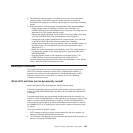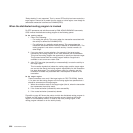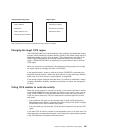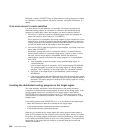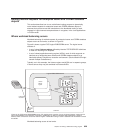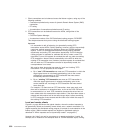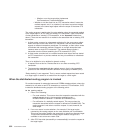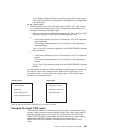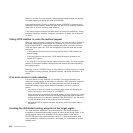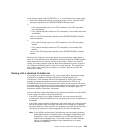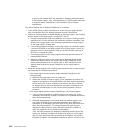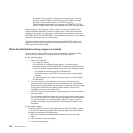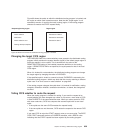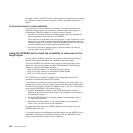
This invocation signals that (unless the routing region and the target region
are one and the same) the routing region’s responsibility for this request has
been discharged.
On the target region:
These invocations occur only if the target region is CICS TS for z/OS, Version
2.1 or later and the routing program on the routing region has specified that it
should be reinvoked on the target region:
1. When the routed method starts on the target region. That is, when the CICS
transaction specified on the REQUESTMODEL definition starts.
2.
v If the routed method is part of an OTS transaction, if the OTS transaction
ends successfully.
v If the method executes outside an OTS transaction, if the method itself
ends successfully.
That is, if the CICS transaction specified on the REQUESTMODEL definition
ends successfully.
3.
v If the routed method is part of an OTS transaction, if the OTS transaction
abends.
v If the method executes outside an OTS transaction, if the method itself
abends.
That is, if the CICS transaction specified on the REQUESTMODEL definition
abends.
Figure 62 shows the points at which the distributed routing program is invoked, and
the region on which each invocation occurs. Note that the “target region” is not
necessarily remote—it could be the local (routing) region, if the routing program
chooses to run the method locally.
Changing the target CICS region
The DYRSYSID field of the communications area passed to the distributed routing
program initially contains the system identifier (sysid) of the default target region to
which the method request is to be routed. This is derived from the value of the
REMOTESYSTEM option of the installed transaction definition (for the transaction
specified on the REQUESTMODEL definition) on the routing region. If
REMOTESYSTEM is not specified, the sysid passed is that of the local CICS
region.
Route selection
Notification
Route selection error
Routing attempt complete
Routing region
Transaction initiation
Transaction termination
Transaction abend
Target region
Figure 62. When and where the distributed routing program is invoked
Chapter 18. Writing a distributed routing program 633



